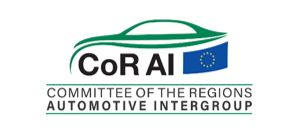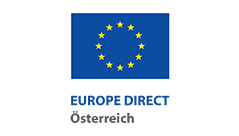PROJECTS: 1st CoRAI Summit on the Future of the Autonomous Mobility
9th of October 2019
Exhibition: ZalaZONE Proving Ground Project and its Regional Interrelations (HU)
Given the increasing trends of automated driving and driving-assistant technologies, both manufacturers and developers face up to a challenge of limited vehicle testing and validation capacities.
By establishment of ZalaZONE testing facility, the Hungarian Government intends to create a special European testing hub for industrial and scientific researches on autonomous vehicle development.
The first phase was completed during 2017 and 2018 with basic testing modules with high demand of industrial and R&D users; the project is to be completed by 2021.
Due to the co-operation network set-up, the complex infrastructure project of ZalaZONE is expected to contribute to making the region of Zalaegerszeg-Graz-Maribor as a one of the leading zone in automotive research.
Exhibition: SISCOGA4CAD- Test Bed for Connected & Automated Driving
SISCOGA, project started in 2010, is a test bed whose main objective is to allow projects related to Autonomous and Connected Driving to be operational. SISCOGA, which consists of 150km of urban and interurban road between the Galician cities of Vigo and Tui, aims to extend to the Portuguese city of Porto within the framework of the 5GMOBIX project, an H2020 project.
Exhibition: MASA Modena a Living Lab for Automated Driving
MASA is a living lab created to develop, test and validate automated and connected vehicles. MASA is composed by simulators, proving ground and public roads. MASA consists in a public-private partnership that offers OEMs, tier 1 and tier 2 companies a complete environment to develop and validate solutions for Cooperative Connected Automated Mobility. Through its facilities, MASA offers three kind of services: advanced training, research & product development and support for experimental test implementation.
TRACASA: 3D Mapping Using Galileo Satellites (Navarra, Spain)
TRACASA: 3D Mapping Using Galileo Satellites (Navarra, Spain)
NAITEC, the Automotive and Mechatronics Technology Center of Navarra, will show its capacities in automotive (ECUs, printed electronics, materials and component's testing,...) and intelligent process and products. TRACASA, as Autonomous driving acceleration partner for developers and oems will show the Digitized testing area for the development of Autonomous driving car technology.
KIT Baden-Württemberg (Baden-Wurttemberg, Germany)
Since 2018 the Test Area Autonomous Driving Baden-Württemberg (TAF BW) provides a platform for companies and research institutions to test future-oriented technologies for connected and automated driving in everyday road traffic. The test area, which is open and accessible to everyone, is funded by the state of Baden-Württemberg and covers all relevant road types. Therefore, various sections of the existing road infrastructure in the cities of Karlsruhe and Heilbronn were prepared, high-precision 3D maps were generated, sensors for real-time recording and anonymization of traffic and its influencing factors were installed, and fast data transmission systems are provided.
Valencia Autonomous Driving Project (Valencia, Spain)
The Instituto de Biomecánica (IBV) is leading the European project SUaaVE (SUpporting acceptance of automated vehicle), funded by the Horizon 2020 program. The main objective of SUaaVE is to improve the response and sensitivity of the autonomous vehicle, making it more aware of the occupants, pedestrians and other drivers' needs. This will be possible through close collaboration between companies, universities and technology centers, through a design process known as people-oriented design (HDD) that will take into account the end user of the vehicle. SUaaVE will solve this gap by improving the synergies of the social sciences, human factors research and the automobile market. The SUaaVE consortium is a combination of research institutions and industrial and market partners, oriented to Social Science, Human Factors Engineering and Technical Engineering, which will introduce the Human Component in the Connected Automated Vehicle and enhance user and society acceptance.
CLEPA Presentation of their Future Activities on Autonomous Driving
What will the future of mobility look like? In CLEPA's view, the future is safe, sustainable, smart and competitive. People and goods transport are a cornerstone of well-functioning societies and vibrant economies. Technology is essential to delivering new forms of mobility, and automotive suppliers are at the forefront of innovations that will help realise the transformation for current and future generations. CLEPA will present its 360° campaign "Future as we move", an invitation for an open dialogue, aspiring to work together to deliver a safer, cleaner, smarter, accessible and more diverse mobility for all, harnessing technology leadership in Europe. Additionally, CLEPA will raise awareness about initiatives supporting connected and automated driving, such as the EU Projects ENSEMBLE and ARCADE.
Mobility Cluster ACstyria: Testing Regions for Autonomous Driving and Flying
ACstyria represents a Styrian network of around 300 companies from the automotive, aerospace and rail systems sectors - with more than 70.000 employees and a total turnover of more than 17 billion €. The main purpose of the first european mobility cluster - founded in 1995 - is the support of styrian companies along the entire value-creation chain. With ALP.Lab, a testing region for autonomous driving and the newly founded AIRlabs Austria - a proving ground for drones, Styria is working on the future of autonomous mobility.
Contact:




